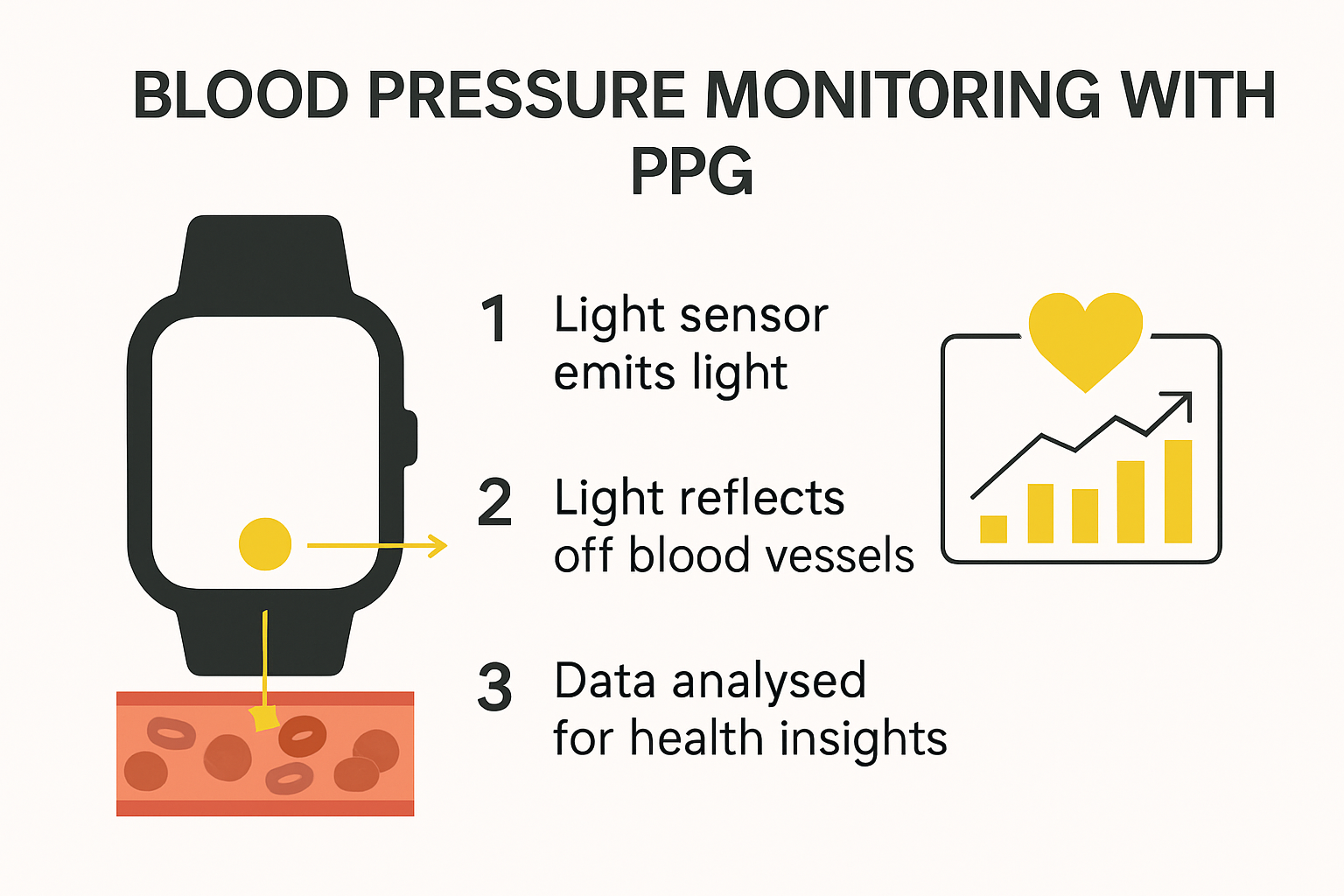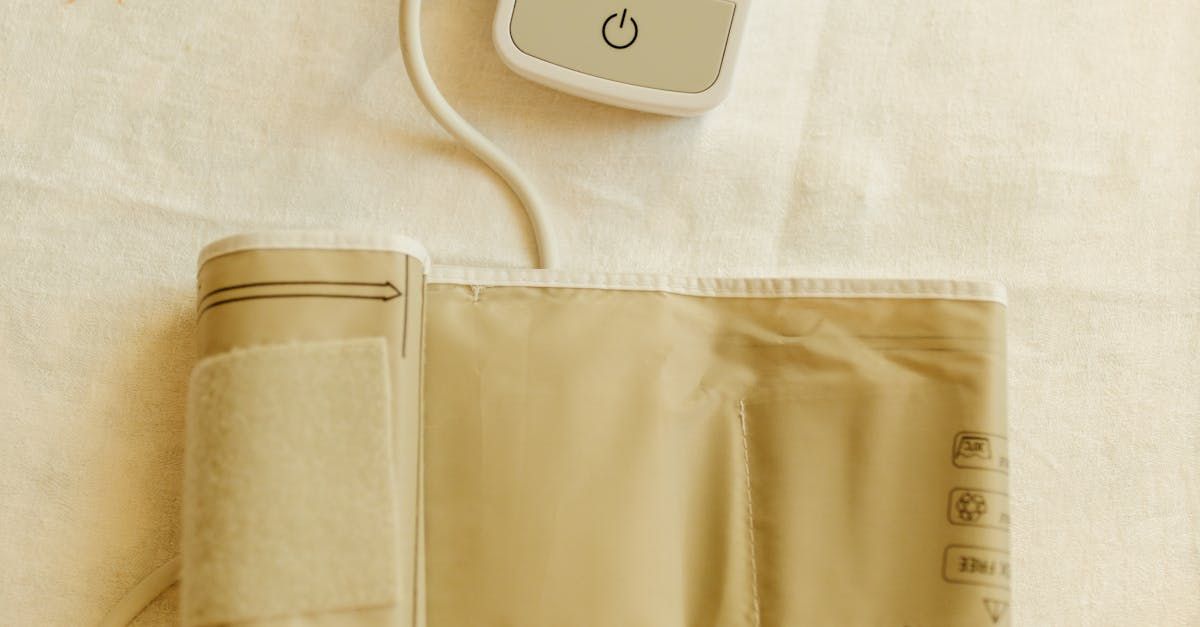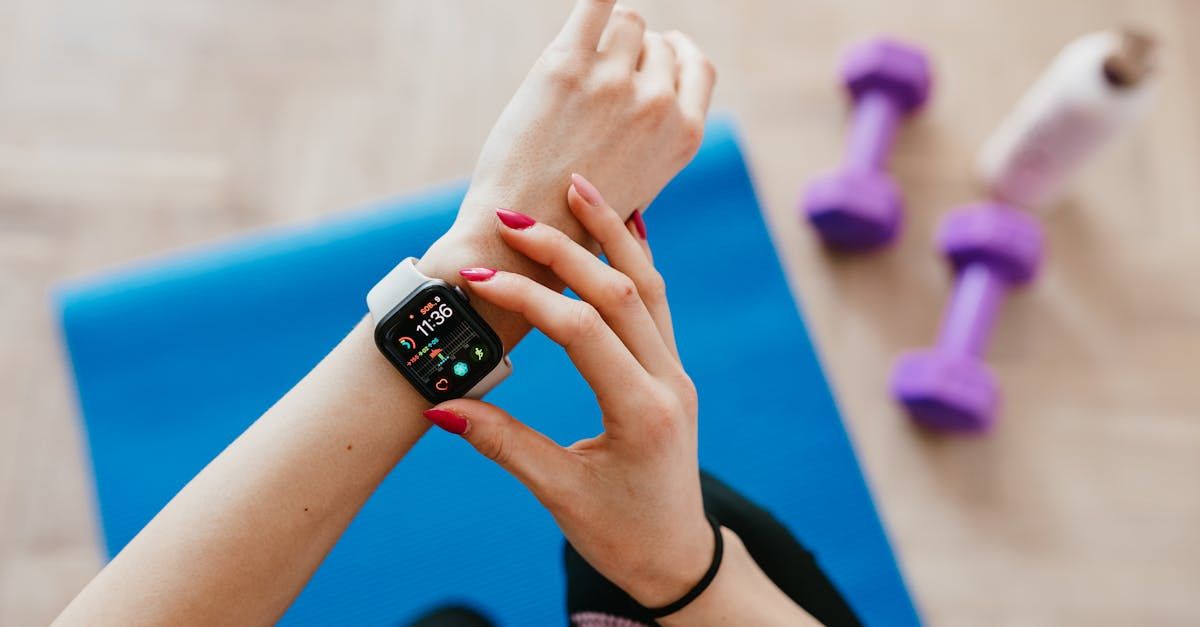Smart watches with blood pressure monitoring are creating a buzz among South Africans who want more control over their health. Here’s a surprise though. While you might expect these devices to be just another flashy gadget, research shows that some smart watches are now clinically validated to track blood pressure almost as accurately as traditional devices in young adults. That flips the whole story and raises a question most don’t expect. What hidden differences set these smart watches apart for tech pros, seniors, and business owners alike?
Table of Contents
- How Blood Pressure Monitoring Works On Smart Watches
- Top Smart Watches With Blood Pressure Monitoring In South Africa
- Comparing Features For Tech Pros, Seniors, And Businesses
- Choosing The Right Smart Watch For Your Needs And Budget
Quick Summary
| Takeaway | Explanation |
|---|---|
| Optical Blood Pressure Monitoring Uses PPG | Smart watches utilize photoplethysmography (PPG) to non-invasively measure blood pressure by analyzing blood volume changes in the skin. |
| Calibration is Key for Accuracy | Periodic calibration with traditional blood pressure devices is essential for accurate smartwatch readings, influenced by factors like skin tone and movement. |
| Varied Needs of Users | User groups like tech professionals, seniors, and business owners have distinct requirements that inform the selection of smart watches, emphasizing features tailored to their needs. |
| Budget Alignment with Features | Smart watches are available across various price ranges, requiring consumers to match budget constraints with desired functionalities, from basic monitoring to advanced processing. |
| Consult Healthcare Professionals | Always engage with healthcare providers for comprehensive assessments, as smart watches serve as supplemental health tools but should not replace professional medical evaluations. |
How Blood Pressure Monitoring Works on Smart Watches
Smart watches with blood pressure monitoring represent a groundbreaking intersection of health technology and wearable devices. Understanding the complex mechanisms behind these innovative health trackers reveals the sophisticated science that transforms a simple wristband into a personal health monitoring tool.
The Science of Optical Blood Pressure Detection
Smart watches leverage an advanced technique called photoplethysmography (PPG) to estimate blood pressure. According to research from know about watch, this optical technique detects subtle blood volume changes within the microvascular tissue beneath the skin. By analyzing variations in light absorption and reflection, these devices can capture intricate details about blood flow and cardiovascular dynamics.
The PPG sensor uses specialized light-emitting diodes that penetrate the skin, measuring how blood vessels expand and contract with each heartbeat. When blood flows through your vessels, it absorbs more light, creating a unique optical signature that smart watches can interpret. This non-invasive method allows continuous monitoring without traditional uncomfortable blood pressure cuffs.

Calibration and Accuracy Considerations
Scientific research published by the National Center for Biotechnology Information highlights critical factors affecting smartwatch blood pressure measurements. Accurate readings require periodic calibration with standard medical devices. Users must input multiple manual measurements from traditional blood pressure cuffs to establish a baseline for the smart watch’s algorithms.
Factors like skin tone, device placement, and individual movement can significantly impact measurement precision. People with certain medical conditions such as atrial fibrillation or peripheral vascular disease might experience reduced accuracy. Therefore, these devices should complement rather than replace professional medical assessments.
Advanced Algorithmic Processing
Behind the sleek design of smart watches lies complex algorithmic processing. Machine learning models continuously analyze multiple physiological signals including heart rate variability, pulse wave velocity, and arterial stiffness. These algorithms create sophisticated predictive models that transform raw sensor data into meaningful blood pressure estimates.
The computational power embedded in modern smart watches allows real-time data processing, providing users with instant insights into their cardiovascular health. Advanced sensors can detect micro-changes in blood flow that traditional monitoring methods might miss, offering a more dynamic understanding of personal health metrics.
While smart watches with blood pressure monitoring represent an exciting technological advancement, they should be viewed as supportive health tools. Regular consultation with healthcare professionals remains essential for comprehensive medical assessment and interpretation of these advanced wearable technology readings.
Top Smart Watches with Blood Pressure Monitoring in South Africa
The rapidly evolving world of wearable health technology has transformed how South Africans monitor their cardiovascular health. Smart watches with blood pressure monitoring capabilities have emerged as game-changing devices that provide real-time insights into personal wellness.
Clinical Validation and Performance Insights
Research published in a comprehensive medical study revealed promising results about smartwatch blood pressure monitoring. A pilot randomized controlled trial demonstrated significant potential, showing that commercial smartwatches can effectively track blood pressure measurements among young adults. This breakthrough highlights the increasing reliability of these innovative health monitoring devices.
A large-scale validation study involving 3,077 participants provided nuanced insights into smartwatch performance. The research found that these devices excel in measuring diastolic blood pressure across different population segments and can accurately capture systolic blood pressure, particularly in younger and normotensive individuals. However, the study also noted potential accuracy limitations in older and hypertensive populations.
Key Features to Consider
When selecting a smart watch with blood pressure monitoring, consumers should evaluate several critical features:
- Accuracy Calibration: Devices requiring periodic manual calibration with traditional blood pressure cuffs
- Battery Life: Ensuring continuous monitoring without frequent charging
- Companion App Integration: Comprehensive health tracking and data visualization
- Water Resistance: Durability for everyday wear and exercise
Performance and Limitations
A systematic review and meta-analysis of multiple randomized controlled trials revealed nuanced perspectives on wearable health technologies. While the studies showed small and statistically non-significant effects on blood pressure control, they underscored the emerging potential of these devices in personal health management.
Consumers should approach smart watches with blood pressure monitoring as complementary health tools rather than definitive medical diagnostic instruments. These devices offer valuable trends and insights but cannot replace professional medical assessment. Regular consultations with healthcare professionals remain crucial for comprehensive health monitoring.
The South African market continues to witness rapid innovation in smart watch technologies, with manufacturers consistently improving sensor accuracy, algorithmic processing, and user experience. As machine learning and sensor technologies advance, we can anticipate even more sophisticated blood pressure monitoring capabilities in future wearable devices.
For individuals seeking proactive health management, smart watches with blood pressure monitoring represent an exciting intersection of technology and personal wellness. By providing continuous, non-invasive cardiovascular insights, these devices empower users to make informed decisions about their health and lifestyle.
Below is a summary table organizing the key features to consider when evaluating smart watches with blood pressure monitoring, as described above:
| Feature | Description | Why It Matters |
|---|---|---|
| Accuracy Calibration | Requires periodic manual calibration using cuff readings | Ensures measurement reliability |
| Battery Life | Ability to last multiple days between charges | Essential for uninterrupted monitoring |
| App Integration | Syncs with health apps for data visualisation | Enables trend tracking and easy sharing |
| Water Resistance | Resistant to sweat and water exposure | Important for active and daily use |
Comparing Features for Tech Pros, Seniors, and Businesses
Smart watches with blood pressure monitoring technology cater to diverse user groups, each with unique requirements and expectations. Understanding the specific needs of tech professionals, seniors, and business owners helps in selecting the most appropriate device.
Tech Professionals: Advanced Performance and Integration
Research examining smartwatch capabilities reveals critical performance nuances for tech-savvy users. The Samsung Galaxy Watch Active 2, for instance, demonstrates measurement variations that challenge precise blood pressure tracking. Tech professionals require devices with high computational accuracy and seamless digital ecosystem integration.
Key considerations for tech professionals include:
- Advanced sensor technology
- Comprehensive data synchronization
- Machine learning adaptive algorithms
- Cross-platform compatibility
Seniors: Health Monitoring and Accessibility
A systematic review of wearable technologies emphasizes the importance of user engagement for aging populations. The Omron HeartGuide smartwatch demonstrates promising alignment with traditional ambulatory blood pressure monitors, making it particularly suitable for seniors seeking reliable health tracking.
Feature priorities for seniors include:
- Large, readable display
- Simple interface design
- Extended battery life
- Emergency health alert capabilities
- Comfortable, lightweight construction
Business Owners: Practical Health Monitoring
For entrepreneurs and small business owners, smart watches with blood pressure monitoring represent both a personal health tool and a potential business asset. These devices offer continuous health insights without disrupting professional workflows.
Business-centric features to consider:
- Robust data privacy protocols
- Professional aesthetic design
- Quick charging capabilities
- Durability for active work environments
- Cost-effective health monitoring
While each user group has distinct requirements, common threads emerge across these diverse demographics. Accuracy, reliability, and user-friendly design remain paramount considerations when selecting a smart watch with blood pressure monitoring capabilities.
The evolving landscape of wearable health technology continues to bridge gaps between personal wellness and professional efficiency. As sensors become more sophisticated and algorithms more precise, smart watches will likely transform from niche health accessories to essential productivity and wellness companions across various user segments.
Below is a comparison table outlining feature priorities for tech professionals, seniors, and business owners based on the information above:
| User Group | Top Feature Priorities |
|---|---|
| Tech Professionals | Advanced sensors, data sync, ML algorithms, compatibility |
| Seniors | Readable display, simple UX, battery, alerts, comfort |
| Business Owners | Data privacy, pro design, fast charging, durability, value |
Choosing the Right Smart Watch for Your Needs and Budget
Selecting the ideal smart watch with blood pressure monitoring requires careful consideration of personal health goals, technological capabilities, and financial constraints. Understanding the nuanced landscape of wearable health technology empowers consumers to make informed decisions.
Health and Medical Certification Considerations
According to Gauteng Lifestyle Magazine, devices like the HUAWEI WATCH D2 represent a significant advancement in medical-grade wearable technology. This device has received European CE (MDR) medical certification, signaling compliance with rigorous international safety and quality standards.
When evaluating smart watches, consumers should prioritize devices that:
- Demonstrate medical-grade accuracy
- Provide transparent measurement methodologies
- Offer comprehensive health tracking features
- Support regular software updates
Budget and Features Alignment
Samsung’s Health Monitor app illustrates the diverse ecosystem of blood pressure monitoring technologies. Different price points offer varying levels of functionality, making it crucial to match device capabilities with individual health monitoring requirements and financial resources.
Budget considerations typically fall into three primary categories:
- Entry-Level (R1,500 - R3,000): Basic monitoring features
- Mid-Range (R3,000 - R6,000): Enhanced sensor accuracy
- Premium (R6,000 - R10,000): Advanced algorithmic processing
Below is a summary table simplifying the budget brackets and feature levels for smart watches with blood pressure monitoring in South Africa:
| Price Category | Price Range | Feature Examples |
|---|---|---|
| Entry-Level | R1,500 - R3,000 | Basic monitoring |
| Mid-Range | R3,000 - R6,000 | Enhanced sensors, better accuracy |
| Premium | R6,000 - R10,000 | Advanced processing, more features |
Practical Selection Strategy
Navigating the smart watch market requires a strategic approach. Beyond blood pressure monitoring, consider additional factors that enhance overall device value. Battery life, water resistance, compatibility with existing devices, and companion app functionality significantly impact long-term user satisfaction.
Key recommendation strategies include:
- Consulting healthcare professionals before making medical technology purchases
- Reading multiple user reviews from verified purchasers
- Comparing warranty and after-sales support options
- Testing device ergonomics and comfort
While technological innovation continues to transform personal health monitoring, smart watches remain supplementary tools. They provide valuable insights but cannot replace professional medical diagnosis. Regular health check-ups and direct consultation with healthcare providers remain essential for comprehensive wellness management.
The South African market offers a growing range of smart watches catering to diverse health monitoring needs. By carefully evaluating personal requirements, technological capabilities, and budget constraints, consumers can select devices that provide meaningful health insights and support their wellness journey.
Frequently Asked Questions
What are the best smart watches for blood pressure monitoring in 2025?
Smart watches with blood pressure monitoring that stand out in 2025 include models from brands like HUAWEI, Samsung, and Omron, noted for their clinical validation and reliable performance in tracking blood pressure.
How accurate are smart watches in measuring blood pressure?
Clinical research indicates that some smart watches can track blood pressure almost as accurately as traditional devices in young adults. However, regular calibration with standard devices is necessary to maintain accuracy.
Can seniors effectively use smart watches for blood pressure monitoring?
Yes, many smart watches are designed with seniors in mind, featuring large displays, easy interfaces, and emergency alerts, making them accessible health monitoring tools for older adults.
Should I replace regular doctor visits with smart watch monitoring?
No, while smart watches can provide valuable health insights, they should complement regular medical assessments and not replace consultations with healthcare professionals.
Upgrade Your Health Journey with Trusted Smart Wearable Solutions
Taking charge of your blood pressure is more than a trend—it is often a necessity for peace of mind and confidence in your daily routine. As highlighted in our latest article on smart watches with blood pressure monitoring, many South Africans face real challenges: finding reliable, accurate devices that fit their budget, lifestyle, and need for effortless clarity. From calibration concerns to the demand for quality without losing affordability, the struggle is real when wellness is at stake.
Ready to choose a smart wearable that truly matches your needs? Explore our most popular smart health tech and accessories, all quality-vetted for accuracy and long-lasting use. For those wanting to store and showcase their investment in style, consider the wooden watch box collection designed for both protection and elegant display. Do not wait—visit PMC Jewellery’s trusted online selection to experience real savings on premium brands and local support. Your best health and smart tech solutions are just a few clicks away.
Recommended
- For Samsung Galaxy Watch3 45mm 20mm Magnetic Buckle Leather Watch Band – PMC Jewellery
- Nylon Watch Band For Apple Watch Series 7 45mm / 6 & SE & 5 & 4 44mm / – PMC Jewellery
- Metal Earrings Simple Geometric Embossed Floral Earrings Retro Fashion – PMC Jewellery
- HZQW-101 Silent Alarm Shock Smart Wireless Watch Bed Rest Corrector(Bl – PMC Jewellery


